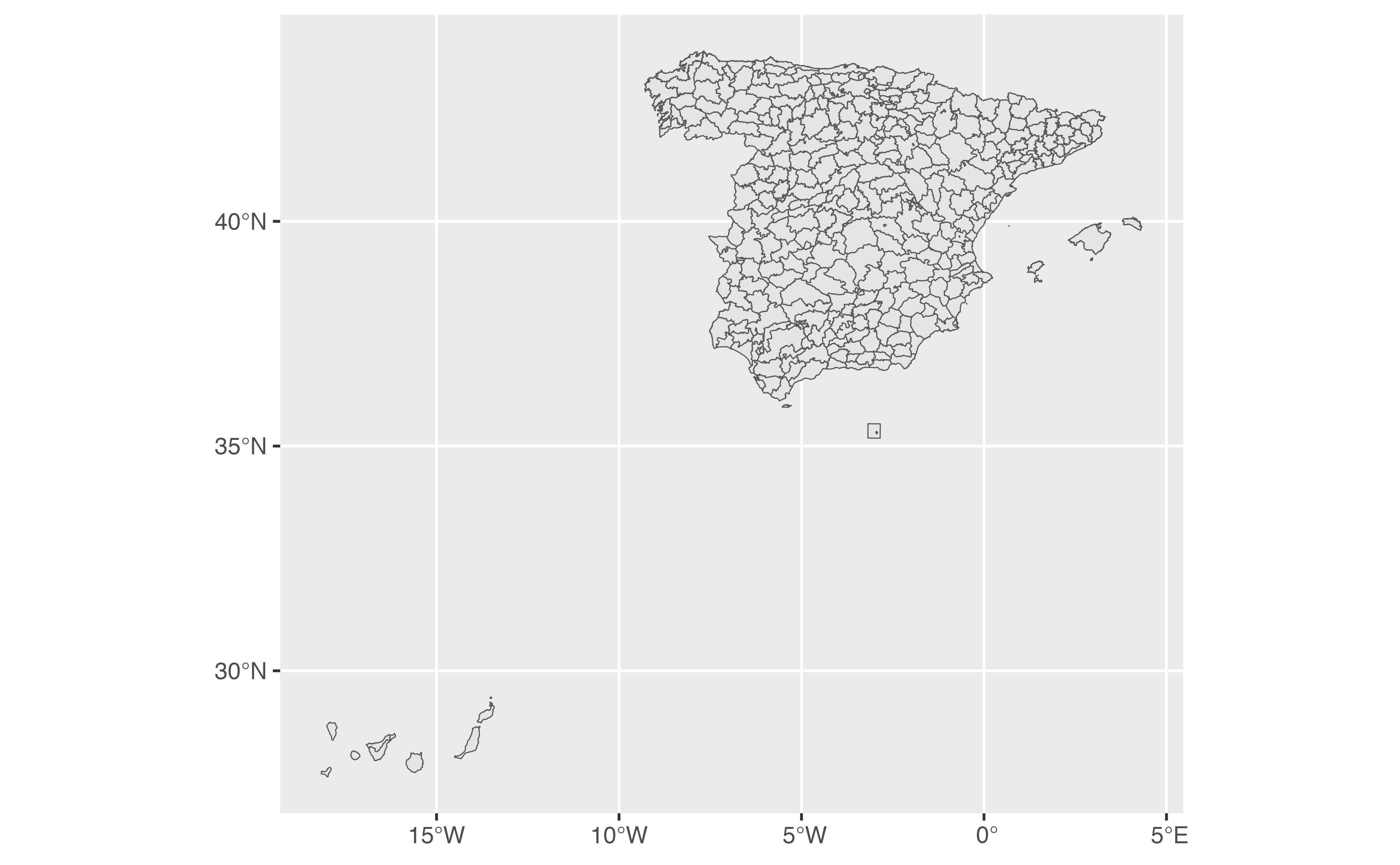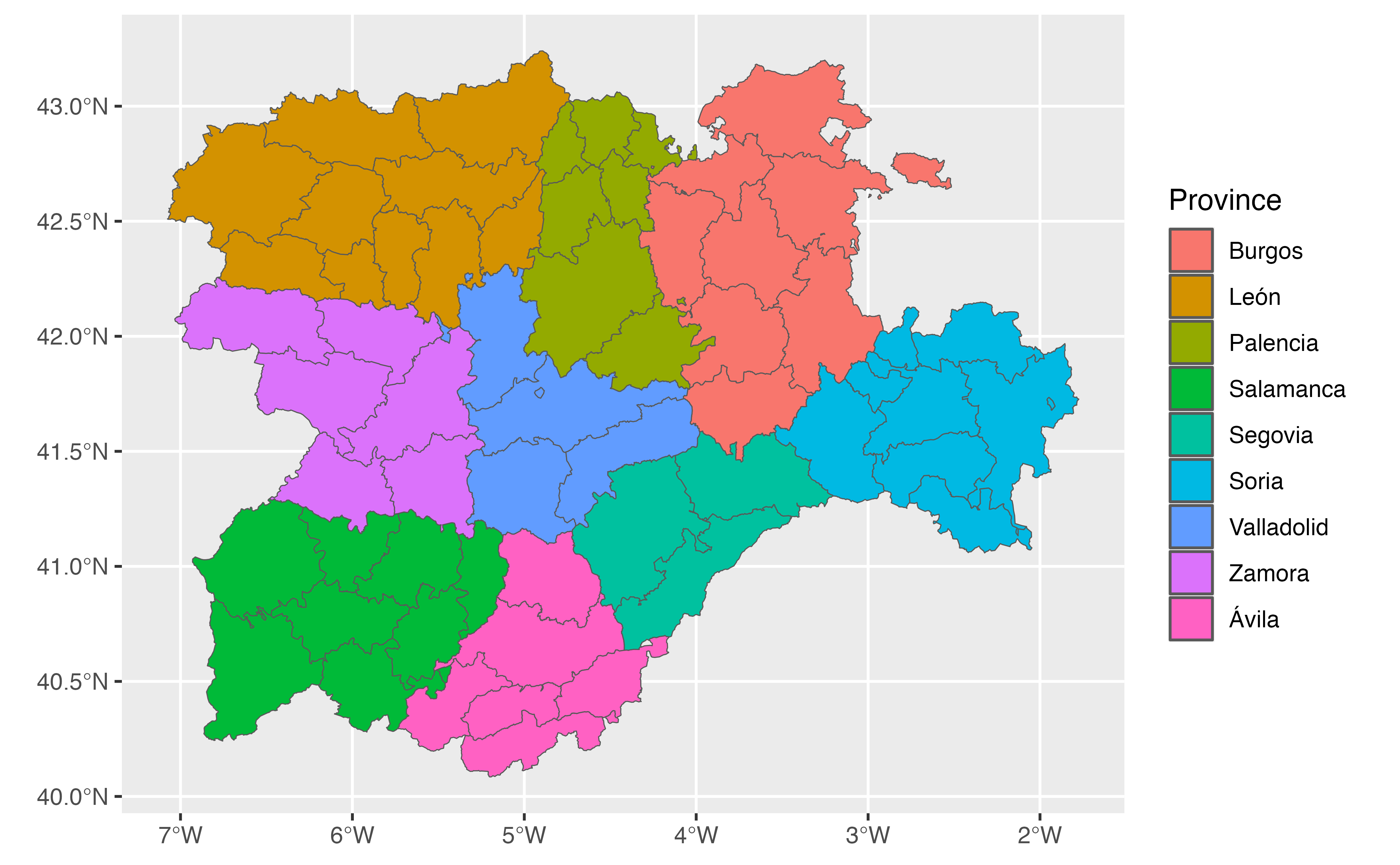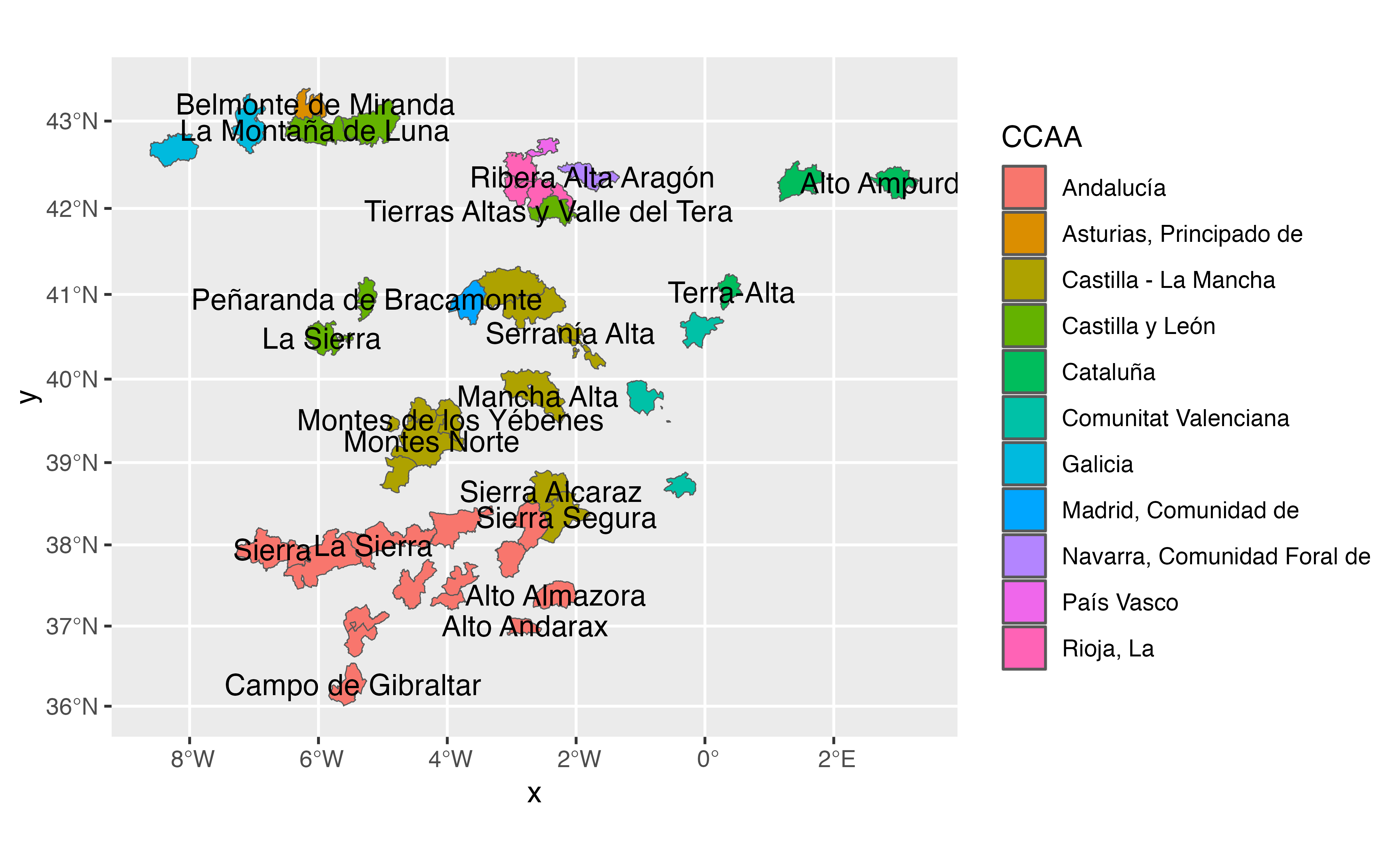Returns 'comarcas' of Spain as sf POLYGON objects.
Usage
esp_get_comarca(
region = NULL,
comarca = NULL,
moveCAN = TRUE,
type = c("INE", "IGN", "AGR", "LIV"),
epsg = "4258",
update_cache = FALSE,
cache_dir = NULL,
verbose = FALSE
)Arguments
- region
A vector of names and/or codes for provinces or
NULLto get all the comarcas. See Details.- comarca
A name or
regexexpression with the names of the required comarcas.NULLwould return all the possible comarcas.- moveCAN
A logical
TRUE/FALSEor a vector of coordinatesc(lat, lon). It places the Canary Islands close to Spain's mainland. Initial position can be adjusted using the vector of coordinates. See Displacing the Canary Islands.- type
One of
"INE","IGN","AGR","LIV". Type of comarca to return, see Details.- epsg
projection of the map: 4-digit EPSG code. One of:
"4258": ETRS89."4326": WGS84."3035": ETRS89 / ETRS-LAEA."3857": Pseudo-Mercator.
- update_cache
A logical whether to update cache. Default is
FALSE. When set toTRUEit would force a fresh download of the source file.- cache_dir
A path to a cache directory. See About caching.
- verbose
Logical, displays information. Useful for debugging, default is
FALSE.
Value
A sf polygon object.
Details
About comarcas
'Comarcas' (English equivalent: district, county, area or zone) does not always have a formal legal status. They correspond mainly to natural areas (valleys, river basins etc.) or even to historical regions or ancient kingdoms.
In the case of Spain, comarcas only have an administrative character legally recognized in Catalonia, the Basque Country, Navarra (named merindades instead), in the region of El Bierzo (Castilla y Leon) and Aragon. Galicia, the Principality of Asturias, and Andalusia have functional comarcas.
Types
esp_get_comarca() can retrieve several types of comarcas, each one
provided under different classification criteria.
"INE": Comarcas as defined by the National Statistics Institute (INE)."IGN": Official comarcas, only available on some Autonomous Communities, provided by the National Geographic Institute."AGR": Agrarian comarcas defined by the Ministry of Agriculture, Fisheries and Food (MAPA)."LIV": Livestock comarcas defined by the Ministry of Agriculture, Fisheries and Food (MAPA).
Misc
When using region you can use and mix names and NUTS codes
(levels 1, 2 or 3), ISO codes (corresponding to level 2 or 3) or
"cpro" (see esp_codelist).
When calling a higher level (Province, Autonomous Community or NUTS1), all the comarcas of that level would be added.
Legal Notice
The use of the information contained on the INE website may be carried out by users or re-use agents, at their own risk, and they will be the sole liable parties in the case of having to answer to third parties due to damages arising from such use.
About caching
You can set your cache_dir with esp_set_cache_dir().
Sometimes cached files may be corrupt. On that case, try re-downloading
the data setting update_cache = TRUE.
If you experience any problem on download, try to download the
corresponding .geojson file by any other method and save it on your
cache_dir. Use the option verbose = TRUE for debugging the API query.
Displacing the Canary Islands
While moveCAN is useful for visualization, it would alter the actual
geographic position of the Canary Islands. When using the output for
spatial analysis or using tiles (e.g. with esp_getTiles() or
addProviderEspTiles()) this option should be set to FALSE in order to
get the actual coordinates, instead of the modified ones. See also
esp_move_can() for displacing stand-alone sf objects.
Examples
# \donttest{
comarcas <- esp_get_comarca(moveCAN = FALSE)
library(ggplot2)
ggplot(comarcas) +
geom_sf()
 # IGN provides recognized comarcas
rec <- esp_get_comarca(type = "IGN")
ggplot(rec) +
geom_sf(aes(fill = t_comarca))
# IGN provides recognized comarcas
rec <- esp_get_comarca(type = "IGN")
ggplot(rec) +
geom_sf(aes(fill = t_comarca))
 # Legal Comarcas of Catalunya
comarcas_cat <- esp_get_comarca("Catalunya", type = "IGN")
ggplot(comarcas_cat) +
geom_sf(aes(fill = ine.prov.name)) +
labs(fill = "Province")
# Legal Comarcas of Catalunya
comarcas_cat <- esp_get_comarca("Catalunya", type = "IGN")
ggplot(comarcas_cat) +
geom_sf(aes(fill = ine.prov.name)) +
labs(fill = "Province")
 # }
# }
